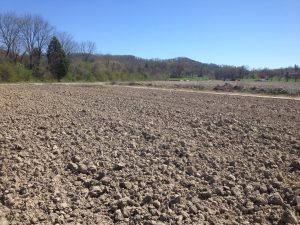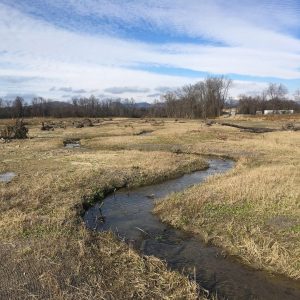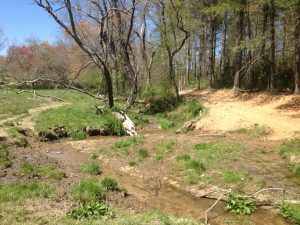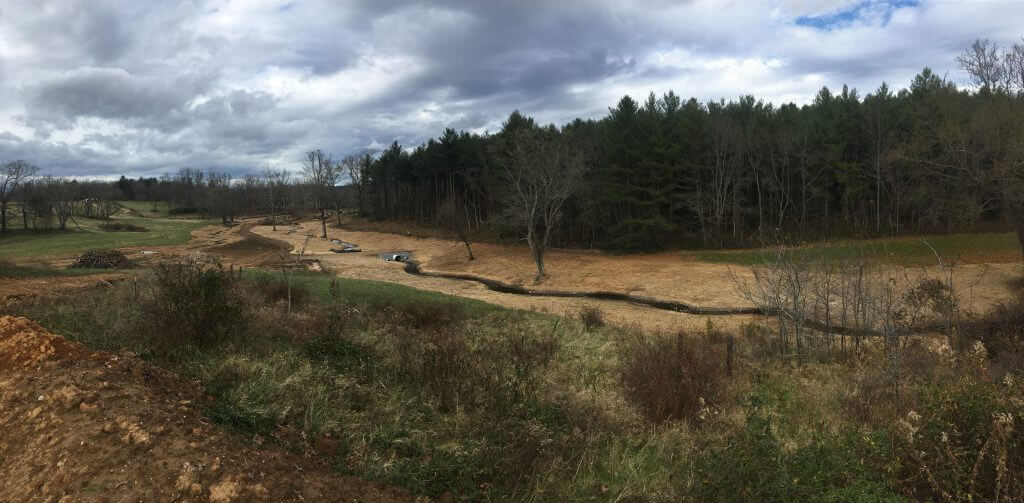For the past three years, Equinox has been working as a partner with EW Solutions on a stream and wetland restoration project in Fletcher, NC. The project is looking great and we want to share our progress! The goal of the project is to improve the ecological function of the existing streams, wetlands, and riparian corridor by restoring the streams and wetlands to a stable condition, removing invasive species, and re-vegetating the riparian area with native plant species appropriate for the watershed.

This first photo illustrates the condition of Weston Creek before construction. Weston creek is a significant tributary of Hoopers Creek, classified as a stream that supports trout. Areas of Weston Creek had been heavily manipulated by relocating, ditching, plowing, and cultivation of historic wetlands and streams. These practices had removed the functionality of the wetlands along Weston Creek. Functioning wetlands are essential for improving flood attenuation, nutrient removal, and providing habitat.

This second photo illustrates the condition of Weston Creek shortly after restoration. Restoration of Weston Branch has stabilized the stream banks. Historic wetlands have been reconnected to the stream system allowing for nutrient removal and flood storage. A multitude of native trees are scheduled to be planted this winter re-establishing a vegetated riparian buffer and restoring the stream riparian zone.

Across the road from Weston Creek, work has also begun on Fletcher Creek, a tributary of Cane Creek. Cattle have had unrestricted access to Fletcher Creek for many years. Where livestock, especially cattle, congregate around streams, they cause damage by trampling stream banks and by causing soil compaction, increased sedimentation, loss of vegetation, and input of urine and manure into the streams. When livestock stir up silt in riparian areas it can adversely affect the survival and spawning of young fish. Such was the case with Fletcher Creek. Invasive plant species also dominated the vegetative composition of Fletcher Creek, further degrading its ecological function.
Restoration activities along Fletcher Creek have reconnected the stream with the floodplain, allowing for sediment deposition along the floodplain instead of the downstream reaches. Invasive plant species within the riparian zone have also been removed. This winter, we will plant the project area with a diverse assemblage of native tree species, restoring a native buffer to the riparian corridor.

